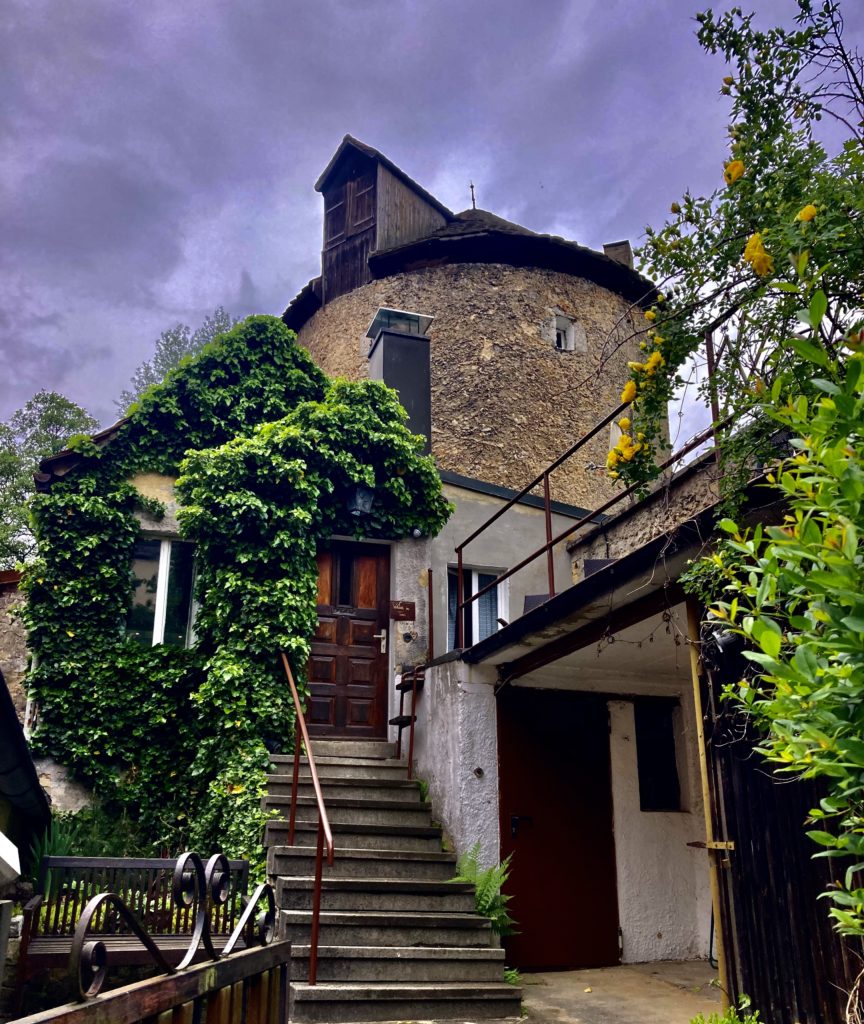
The Tower
I’ve been asked what the significance is of the tower in my website photos. It is a place of intrigue and history, one I dearly love: the homestead of my maternal family and a main setting in my book.
My mother’s family hails from a historic town in Bavaria called Sulzbach-Rosenberg. Built on a massive igneous rock, the town consists of uphill and downhill cobble-stone streets. The original section dates from the 8th century, and was once a vital center for the Palatine dukes and counts. A yellow castle sits at the very top of the igneous rock and looks out over the surrounding hills and valleys. When the last group of royals, the dukes of the House of Wittelsbach, moved out in the 18th century, the buildings lay fallow. Now they house a music school, library, and police station. The Tower is down from the castle, built into the old city wall.
In 1853, the massive steel mill called Maxhutte cranked up in adjacent Rosenberg, and what had been a center of governance became an industrial hub; in its heyday, the steel mill employed around 10,000. The town had to find good use for the castle and surrounding buildings. Constructed in 1388, the stone sentinel was first a watch tower, then a powder tower, until it was eventually deemed useless and put up for sale. My great-grandpa Martin’s grandfather, Leonhard Renner, bought it in 1853. According to local documents, he made the purchase as a twenty-nine-year-old single man. He agreed to pay 1275 guldens, a currency used in the southern German regions at that time. (A good horse could be bought for about ten guldens). Leonhard made an initial down payment, then paid installments until he was handed an official certificate of ownership in 1868. During this time, he married a woman six years older and had three children before he died at the age of forty-five.
Far from luxurious, the Tower with its massive stone walls nevertheless provided a secure home. The original structure consisted of three floors of round rooms and a deep basement. The front door and lobby were later encased in a rectangular stucco addition that also held a kitchen and sitting room. A dizzying steep and twisty flight of stairs led to bedrooms on the second and third floors. The original arrow slits had been expanded into casement windows, and a small weathervane in the shape of a flag with a bold R for Renner was embedded on the turret roof above the large attic dormer window. Martin Renner had been raised here along with seven siblings, his parents, a cow, a goat, and a brood of chickens. Which may be why he was not in a big hurry to move back in. Although Martin inherited the Tower after his mother’s death, his supervisor’s job at the Maxhutte Steel Mill entitled him to a spacious flat in town. I will assume it had a conveniently located washroom, one with heat and running water. Unlike the original one at the Tower.
I remember that washroom well. A tiny toilet room was tucked into a corner of the main floor, but the galvanized steel washtub, fed by a sulfurous nearby spring, was located deep in the unheated cellar. As a child, when I visited my great-grandparents and had to take a bath, I fought it. The smell of sulfur steamed around me and clouded the dusty slat windows as I fervently prayed the devil was busy elsewhere until I was done being scrubbed down. Shivering from cold after being dried off, I would sprint back upstairs into the warmth and comfort of the kitchen.
Now deemed a historic landmark, the Tower is still in the Renner family and is offered as a vacation rental. I stay there when I visit my aunt and cousins. Every visit takes me back to my childhood when I would spend time in the summer and at Christmas. My own fairy tale. Magical.

